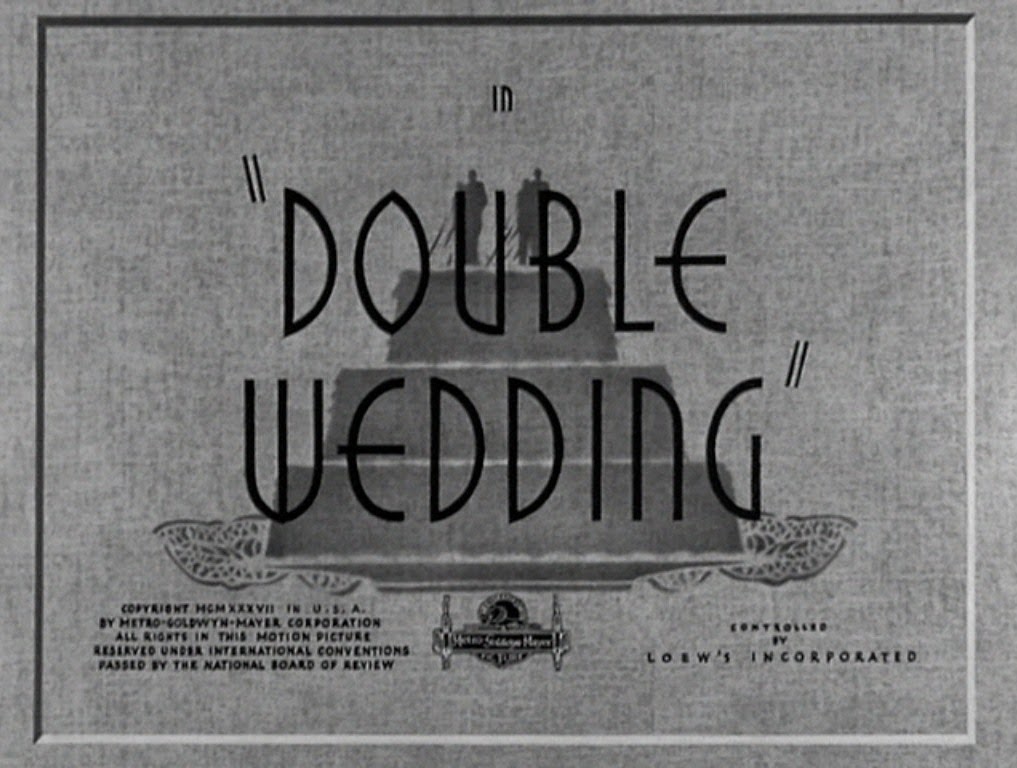When I'm getting dressed in the mornings, it's not CNN nor the morning talk shows that I watch on TV. (Does anyone else get annoyed with those CNN anchors who constantly interrupt and talk over the person being interviewed? And why do commercials have to be so LOUD?) Instead, I like to have Turner Classics going in the background, because the channel often airs 1930s-era movies early in the morning. Just last week, TCM showed Double Wedding, a 1937 screwball comedy starring Myrna Loy and William Powell.
The movie was cute enough, but it was the Cedric Gibbons-designed sets that caught my eye, especially the house of Loy's fashion designer character, Margit. (See below.) I decided to rent the movie so that I could pay attention to both the sets and the dialogue. Here are a few of my favorite scenes from the film:
After passing through Margit's front door with its louvered fan and side lights, one entered the entry hall...
...which had that wonderful staccato black and white floor. The stairs had quite a loopy banister, which resembled a garden border fence.
Blanc de chine objects and glossy satin upholstery, seen here in the living room, were of course the rage on 1930s-era film sets.
In the dining room, there were dramatically-scaled panels with broken pediments, which framed the doorway. Throughout the movie, the mirror-clad dining table was set with those high-style crystal trees and centerpiece...
...which makes sense considering that even the breakfast grapefruit was served rather formally.
Margit was a little uptight and liked order in her household- order that was partially maintained by these typed breakfast menus.
Framing the sliding glass doors, which led to a terrace beyond, were curtains with a pennant-edge...
...whose jagged edges were mimicked by the border fence. And don't you like the curlicue furniture?
The four photos above show Margit's fashion studio, which was quite glamorous with its white-lacquered furniture, horse statue-capped borne, garland-print wallpaper, and those magnificent Greek-Key motif doors.
The bonus shots show a minor character's apartment, which I might like even more than Margit's house. I'm crazy for the living room's plaster swag and tail, which framed the Marie Antoinette-ish bust. But the poor woman's bedspread?? I'm not so crazy about that. It reminds me of Austrian shades.
















